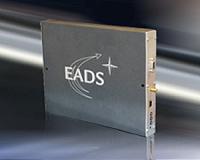 |
Bonn, Germany (SPX) May 24, 2010 On Friday, 21 May 2010 at 19:01 local time (22 Mai, 00:01 Central European Time), the 50th Ariane 5 launcher lifted off on schedule from Europe's Spaceport at Kourou in French Guiana. The payload for this mission comprised the Astra 3B commercial telecommunication satellite and the second communications satellite for the German armed forces (Bundeswehr), COMSATBw-2. The German Aerospace Center (Deutsches Zentrum fur Luft- und Raumfahrt; DLR) is responsible for the orbital positioning and flight operations of this satellite, and has also been involved in a range of comprehensive propulsion unit tests which have played a significant role in the success story of the Ariane launch vehicles. This flight, V194, was the first Ariane flight of 2010, the 50th liftoff for an Ariane 5 and the 194th mission for the Ariane family of launchers.
First radio contact after 33 minutes GSOC has been running successful space missions since 1968. At present, DLR has five satellites for scientific and commercial Earth observation under its control, as well as the European research laboratory Columbus on the International Space Station (ISS).
COMSATBw-1 in orbit since October 2009 In other words, it will be 'parked' in its intended orbital position," explains Thomas Kuch as he runs through the next steps for this mission. This will be followed by the 'commissioning' or initial operation of the satellite subsystems. Antennas and solar panels will be deployed and subjected to in-orbit tests lasting several weeks. In the course of these tests, the satellite will be configured for its intended application. "Following the successful operational acceptance of COMSATBw-2 in orbit, the new satellite system will be handed over for regular operations, which are scheduled to last for the next 15 years. At DLR, 30 members of staff will be involved in these operations," states Mission Operations Director Kuch. The satellites COMSATBw-1 and COMSATBw-2 form part of the German armed forces' SATCOMBw programme. Alongside the two communications satellites, this system includes stations and monitoring equipment on ground, and - for the first time - it facilitates autonomous, worldwide transmission of voice and data as well as video and multimedia applications. The entire system is scheduled to commence full-scale operations by early 2011.
Share This Article With Planet Earth
Related Links - Read the latest in Military Space Communications Technology at SpaceWar.com
 EADS DS Introduces World's First TEDS Radio
EADS DS Introduces World's First TEDS RadioParis, France (SPX) May 21, 2010 EADS Defence and Security has introduced the first TEDS data radio in the world. The compact and versatile radio brings unparalleled connectivity and data speed to mission critical communication. Designed for vehicle, office or integrated use, the compact TEDS data radio provides unprecedented possibilities for integration and connectivity. These include the first ever direct IP (Internet ... read more |
|
| The content herein, unless otherwise known to be public domain, are Copyright 1995-2010 - SpaceDaily. AFP and UPI Wire Stories are copyright Agence France-Presse and United Press International. ESA Portal Reports are copyright European Space Agency. All NASA sourced material is public domain. Additional copyrights may apply in whole or part to other bona fide parties. Advertising does not imply endorsement,agreement or approval of any opinions, statements or information provided by SpaceDaily on any Web page published or hosted by SpaceDaily. Privacy Statement |